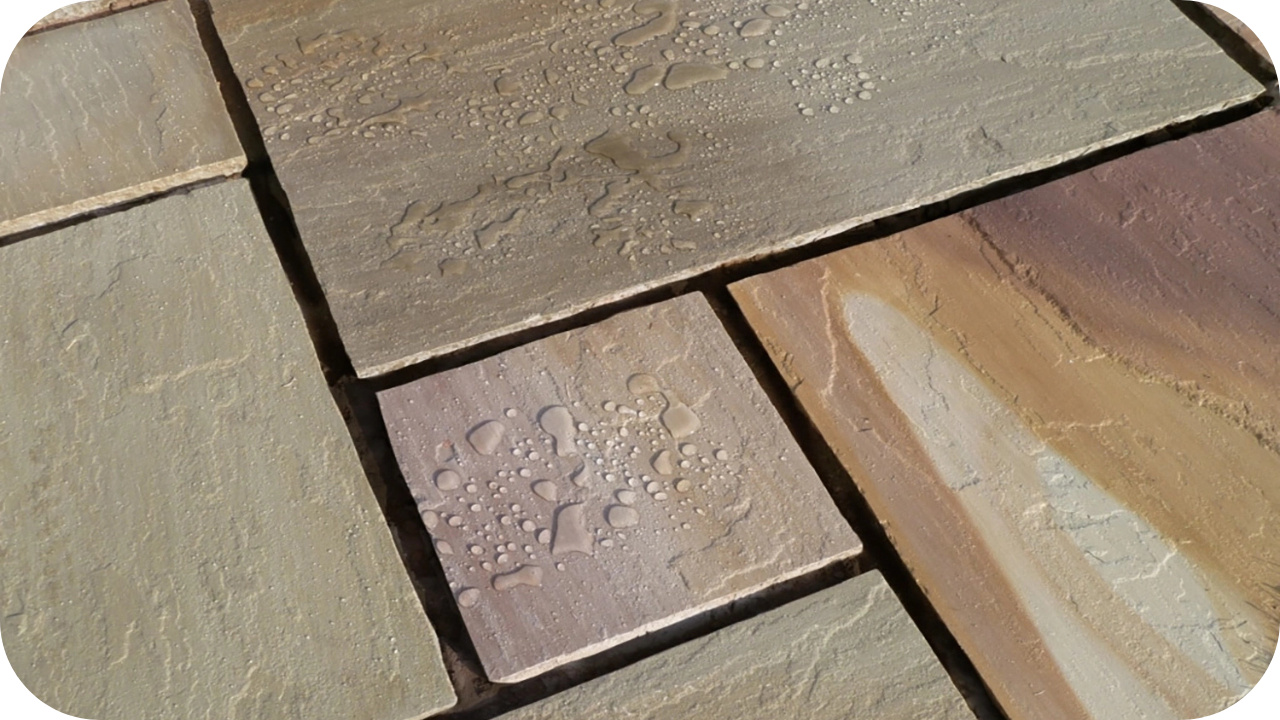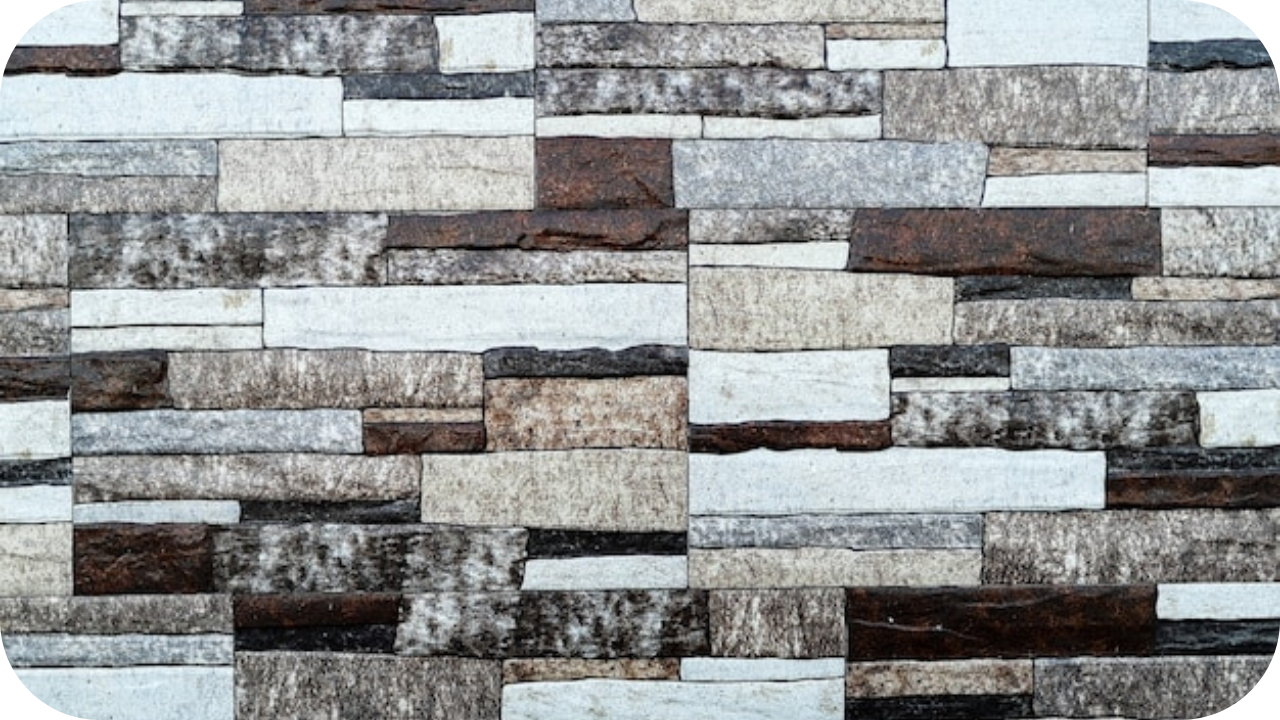
Limestone exteriors are susceptible to weathering and staining, which can diminish their appearance and durability over time.
Without proper protection, limestone absorbs pollutants and moisture that lead to erosion, discoloration, and structural weaknesses, potentially compromising the integrity of your building.
Sealing limestone exteriors is a proven solution to shield them from these elements. This article explores how a high-quality sealant not only enhances the stone’s resistance to environmental damages but also extends its lifespan and preserves its natural beauty.
Understanding Limestone Composition
Limestone is a sedimentary rock primarily composed of calcium carbonate (CaCO3), usually in the form of the mineral calcite. It forms predominantly in marine environments through the accumulation of shells, coral, algae, and fecal debris. This natural process gives limestone its unique and varied textural appearances, which can range from very fine to coarse grains. Limestone often contains visible fossils and natural voids, which contribute to its aesthetic appeal but also affect its porosity and durability.
The porosity of limestone makes it highly absorbent, meaning that water, along with any dissolved salts and acids, can easily penetrate its surface. This characteristic, while making limestone relatively easy to shape and use in construction, also makes it vulnerable to weathering and chemical reactions. In humid climates or polluted urban environments, its susceptibility to acid rain can lead to rapid deterioration.
Understanding the composition and inherent properties of limestone is crucial for anyone looking to use this material in exterior applications. This knowledge underscores the importance of implementing protective measures, such as sealing, to preserve the stone’s natural beauty and structural integrity against environmental factors.
Importance of Sealing Limestone Exteriors
Sealing limestone exteriors is vital to ensure their longevity and maintain their aesthetic appeal. Limestone, being highly porous, is susceptible to absorbing water, which can lead to several detrimental effects. During freeze-thaw cycles, the absorbed water expands as it freezes, potentially causing cracking and spalling of the limestone. Furthermore, moisture absorption can also facilitate the growth of algae and mold, which not only stains the stone but can also lead to further physical deterioration.
Apart from moisture, limestone is reactive to acidic substances; exposure to acid rain or pollutants can result in chemical erosion, leading to a loss of surface detail and structural weakening over time. Sealing creates a protective barrier that minimizes the stone’s exposure to these harmful elements. This barrier not only repels water but also provides resistance against stains from oils and other contaminants.
In essence, sealing limestone exteriors helps to stabilize the stone, preserving its integrity against environmental stressors. It prolongs the facade’s pristine condition and reduces the frequency and cost of maintenance required. For any property owner using limestone, applying a high-quality sealant is a proactive step towards safeguarding this investment.
Benefits of Sealing Limestone Exteriors
Sealing limestone exteriors offers numerous benefits that enhance both the durability and appearance of the stone. Firstly, sealing significantly reduces the limestone’s porosity, limiting the absorption of moisture and preventing damage from freeze-thaw cycles. This protective layer effectively guards against cracking and surface spalling, which are common in unsealed limestone exposed to varying weather conditions.
Secondly, a sealant acts as a barrier against acidic pollutants and rain, which can cause chemical degradation of limestone. By preventing these substances from penetrating the stone, sealing helps preserve the limestone’s intricate natural textures and details from erosion. This is particularly important in urban areas or regions with high acid rain incidence.
Moreover, sealing limestone makes it more resistant to staining from oils, dirt, and other contaminants. This is advantageous for maintaining the aesthetic quality of the stone, making it easier to clean and reducing the need for harsh chemical cleaners that can further damage the surface.
In summary, sealing limestone exteriors enhances their resilience against environmental factors, extends their lifespan, and maintains their visual appeal, making it a crucial maintenance step for any limestone-clad building.
Protection Against Environmental Factors
Sealing limestone exteriors provides essential protection against a variety of environmental factors that can degrade the stone over time. One of the primary threats to limestone is water ingress. Sealing the stone minimizes its natural porosity, reducing water absorption and protecting against moisture-related damage such as erosion, freeze-thaw cycles, and biological growths like moss and algae, which thrive in damp conditions.
In addition to moisture, sealed limestone is safeguarded against acidic pollutants prevalent in urban atmospheres. These pollutants, often a result of industrial emissions and automotive exhaust, can accelerate the chemical weathering process. Sealants act as a chemical barrier, preventing these acidic compounds from penetrating the limestone and causing surface deterioration and structural weakness.
Sealants also offer protection from ultraviolet (UV) light, which can fade and weaken limestone over time. The UV-resistant properties of many sealants help maintain the natural color and integrity of the limestone against the sun’s potentially harmful effects.
By providing a barrier against moisture, acidic pollutants, and UV rays, sealing limestone exteriors significantly enhances the stone’s durability and longevity, ensuring it remains in pristine condition despite the challenging environmental conditions.
Types of Limestone Sealers
Choosing the right type of sealer is crucial for effectively protecting limestone exteriors. There are primarily two types of limestone sealers: penetrating sealers and surface sealers. Each type offers distinct benefits and is suited to different protective needs.
Penetrating Sealers: These sealers are absorbed into the pores of the limestone, forming a chemical barrier that shields the stone from within. They do not change the appearance of the limestone, maintaining its natural look. Penetrating sealers are particularly effective against water penetration and staining agents. They are ideal for environments where maintaining the stone’s natural aesthetic is important while providing substantial protection against moisture and stains.
Surface Sealers: Also known as topical sealers, these form a protective layer on the surface of the limestone. Surface sealers can enhance the color of the limestone, giving it a wet look, and are effective in resisting scratches and abrasions. However, they can alter the stone’s appearance by adding a gloss or sheen and might require more frequent reapplication compared to penetrating sealers.
When selecting a sealer, it is important to consider the specific environmental challenges and aesthetic preferences. For limestone in high-traffic areas or harsh weather conditions, a combination of both types might be recommended to maximize protection and durability.
Application and Maintenance
Applying and maintaining limestone sealers correctly is vital to ensure optimal protection and longevity of the stone’s exterior. Here’s a step-by-step guide on how to properly apply and maintain limestone sealers:
Application Process:
- Cleaning: Before applying any sealer, thoroughly clean the limestone surface to remove dirt, debris, and any biological growth. Use a gentle, pH-neutral cleaner and avoid abrasive tools which can damage the limestone.
- Drying: Ensure the limestone is completely dry before sealing. Any moisture trapped beneath the sealer can cause discoloration or damage to the stone.
- Application: Apply the sealer evenly using a low-pressure sprayer, roller, or brush, depending on the manufacturer’s recommendations. Cover all surfaces uniformly without allowing excess sealer to pool.
- Curing: Allow the sealer to cure as per the time specified by the sealer manufacturer, which can vary from a few hours to a day. Avoid any contact with the surface during this time.
Maintenance:
- Regular Checks: Inspect the sealed limestone periodically for any signs of wear or degradation. Look for dull areas where the sealer may have worn off.
- Touch-Up Applications: Reapply sealer to areas showing signs of wear or after cleaning the limestone. Typically, a full reseal is recommended every two to five years, depending on the type of sealer and the exposure of the limestone to environmental factors.
- Cleaning: Regular cleaning with appropriate cleaners will help maintain the efficacy of the sealer and keep the limestone looking pristine.
Proper application and regular maintenance are crucial to maximize the effectiveness of limestone sealers, preserving the beauty and integrity of the stone over time.
Cost Considerations and Return on Investment (ROI)
- Initial Costs: The cost of limestone sealers varies based on type (penetrating versus surface) and quality. Higher-grade sealers generally cost more initially but offer superior protection and longevity, reducing long-term maintenance costs.
- Professional Application: While DIY application is possible, professional application ensures optimal coverage and effectiveness. This adds to the initial cost but can enhance the longevity of the sealer, minimizing the need for frequent reapplications.
- Maintenance Savings: Investing in a quality sealer reduces the need for ongoing repairs and maintenance. Sealed limestone is more resistant to environmental damage, decreasing the likelihood of incurring costly repairs for issues like cracks, stains, and erosion.
- Property Value Increase: Sealing enhances the durability and aesthetic appeal of limestone exteriors, potentially raising the property’s market value. A well-maintained appearance can increase curb appeal, making the property more attractive to potential buyers.
- Long-Term Benefits: The ROI of sealing limestone includes extended material lifespan, fewer repair needs, and better preservation of the stone’s natural beauty, all of which contribute to overall cost savings and property value enhancement over time.
Environmental and Health Considerations
When considering sealing limestone exteriors, environmental and health considerations are crucial
- Sealing limestone exteriors reduces absorption of pollutants, preventing environmental degradation and preserving surface integrity.
- Preservation of limestone extends its lifespan, minimizing resource consumption and waste generation.
- Sealed surfaces prevent mold, mildew, and infiltration of harmful substances like radon gas, contributing to healthier indoor air quality.
- Easy-to-clean sealed surfaces reduce the need for harsh chemical cleaners, minimizing health risks and water pollution.
- Choosing low VOC and water-based sealants further reduces environmental impact and enhances health benefits.
- Sealing limestone exteriors is a prudent choice for both environmental preservation and promoting healthier indoor environments.
Conclusion: Encouragement for Proactive Measures
Investing in sealing limestone exteriors is not just about enhancing aesthetics; it’s a commitment to environmental preservation and health-conscious living. Take action today to safeguard both your surroundings and well-being by sealing your limestone surfaces for a sustainable and healthier tomorrow.
More To Explore

How to Tell If Stone Is Porous or Not
When selecting stone for your home or project, knowing whether it’s porous can make a huge difference. Porosity affects how your stone absorbs water, stains,

Split Face Stone: What It Is and When to Use It
Looking for a unique, durable material to elevate your next project? Split face stone might be the perfect choice. Known for its textured finish and


